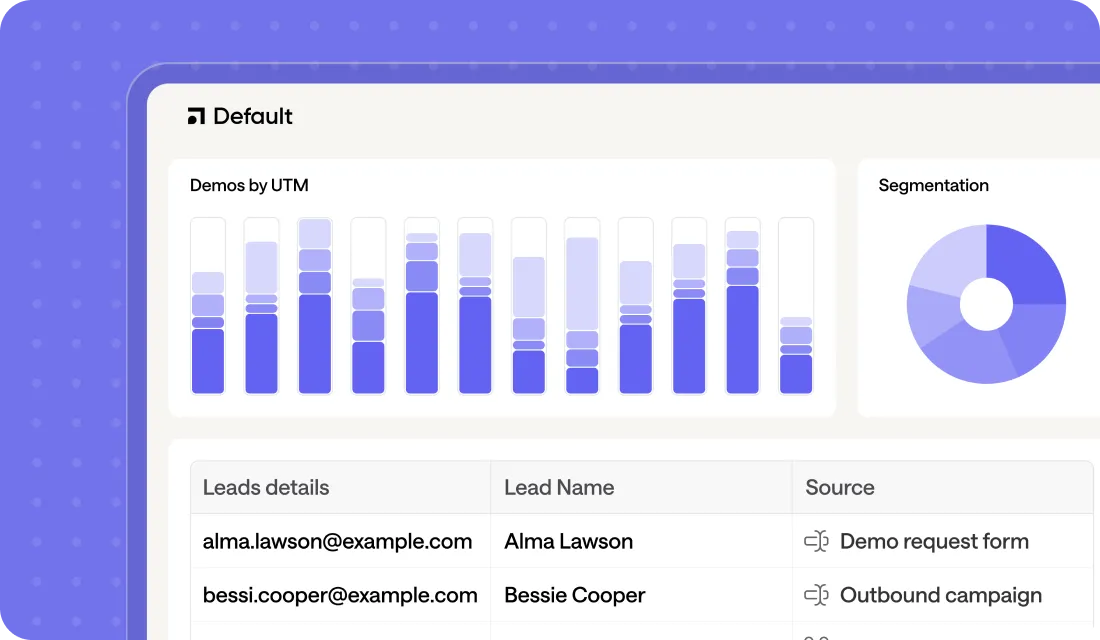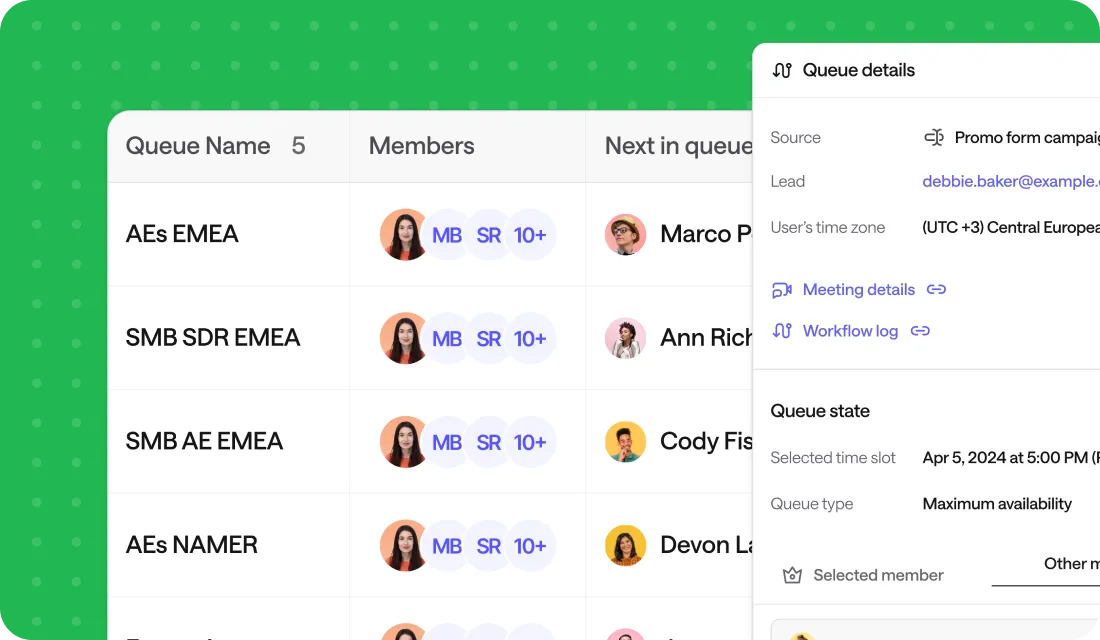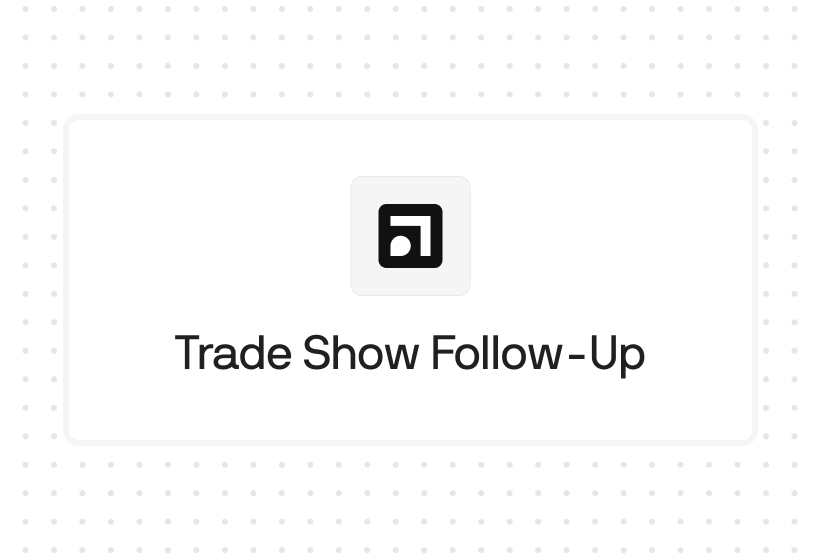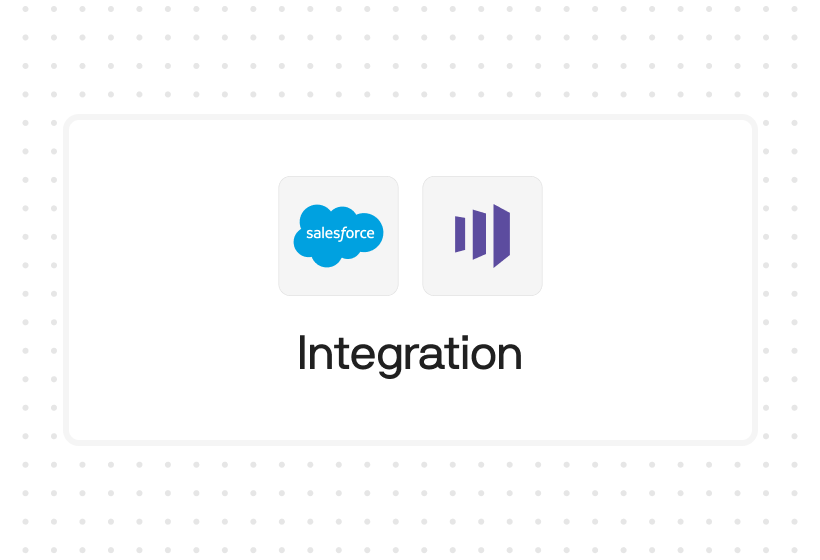Try Default

See how revenue teams automate revenue operations with Default.

Key Takeaways
- Not all leads are created equal. A lead scoring model helps you separate high-intent buyers from passive browsers, making sure sales focus on leads most likely to convert.
- Lead scoring automates qualification at scale. By ranking leads based on intent, behavior, and fit, GTM teams can streamline outreach, reduce wasted effort, and accelerate revenue.
- Predictive scoring goes beyond static models. AI-driven scoring adapts in real time, using past conversion data to surface the best opportunities without manual updates.
- The right scoring model depends on your sales motion. Whether you use rule-based, predictive, or intent-driven scoring, the key is aligning your model with real buying signals.
- Automation is the difference between growth and chaos. Without a structured scoring system, sales teams waste time on low-priority leads while high-value deals slip away.
You have hundreds, maybe thousands of inbound leads—but not all of them are worth your time. Some are ready to buy. Others are just browsing. And a big chunk? They’ll never convert.
So how do you prioritize the right leads without wasting hours chasing dead ends? That’s where lead scoring comes in.
A lead scoring model helps you cut through the noise by automating qualification—sorting leads based on their likelihood to convert so sales can focus on real opportunities. Without it, your team risks spending too much time on low-value leads while high-intent buyers slip away.
In this guide, we’ll break down:
- Why lead scoring models are essential for modern GTM teams
- The five key steps to building a scoring system that actually reflects buyer behavior
- How to automate lead qualification to increase conversion rates and reduce wasted effort
By the end, you’ll have a clear, scalable framework for prioritizing leads more effectively—so your team can focus on closing, not chasing.
Let’s get started.
What is lead scoring?
Lead scoring is the process of ranking inbound leads based on their likelihood to convert. By assigning numerical values to various attributes and behaviors, GTM teams can automate lead qualification, prioritize high-value prospects, and reduce time wasted on unqualified leads.
At its core, a lead scoring model consolidates multiple data points into a single score that helps sales and marketing teams decide who to engage, when to engage them, and how to tailor outreach.
Key factors used in lead scoring
Lead scoring models typically evaluate a mix of explicit and implicit data, including:
- Demographics – Does the lead match your ideal customer profile (ICP)? This includes job title, industry, company size, and location.
- Firmographics – Relevant only for B2B, this evaluates company-specific attributes like revenue, growth stage, or tech stack.
- Behavioral data – Tracks engagement signals such as website visits, resource downloads, email interactions, and event attendance.
- Intent data – Measures buying signals based on searches, competitor comparisons, or third-party intent tracking.
- Engagement with marketing campaigns – Includes ad interactions, social media engagement, and content consumption trends.
Why is a lead scoring model important?
Most leads won’t convert—and the data proves it. According to Adobe, 96% of website visitors aren’t ready to buy, and even among those that do convert, only 20% will close (Invesp).
That means sales teams are spending the majority of their time on leads that won’t result in revenue.
A lead scoring model solves this by introducing data-driven prioritization.
Instead of treating every lead equally, it helps teams automate qualification and focus on high-intent buyers—the ones most likely to move forward. With hundreds or thousands of inbound leads, manual sorting isn’t scalable. Lead scoring makes it possible to identify top opportunities instantly, ensuring sales efforts go where they’re most effective.
What is predictive scoring?
Traditional lead scoring models rely on static rules—assigning points based on predefined criteria. But buyer behavior is constantly shifting, and manual scoring can’t keep up.
Predictive scoring solves this by using AI and machine learning to automatically surface high-value leads.
Instead of relying on fixed rules, it analyzes past conversions, behavioral patterns, and intent signals to predict which leads are most likely to buy—without the guesswork.
How predictive scoring works
Predictive scoring models:
- Analyze past deal data to identify patterns in how high-intent leads behave.
- Pull from multiple data sources—CRM records, website activity, email engagement, and third-party intent signals.
- Continuously refine scoring based on real-time feedback, improving accuracy as more leads convert.
Because predictive scoring adjusts dynamically, it removes human bias, scales with lead volume, and keeps your qualification process aligned with actual buyer behavior.
Why predictive scoring matters
Manual lead scoring can’t adapt fast enough to today’s complex buying cycles. Predictive scoring enables GTM teams to:
- Identify and act on high-intent leads faster.
- Reduce wasted sales effort on low-priority leads.
- Engage the right prospects at the right time, based on real data.
With buying journeys becoming more nonlinear and data-driven, predictive scoring is quickly becoming a must-have for scalable, automated lead qualification.
Types of lead scoring models
Not all lead scoring models work the same way. The right approach depends on your sales cycle, data availability, and GTM strategy. Here’s a breakdown of the most common models used by revenue teams today.
1. Rule-based lead scoring (Traditional scoring model)
The most widely used model, rule-based lead scoring, assigns fixed point values to leads based on predefined criteria. Each attribute or action contributes to a cumulative score, determining whether a lead meets the qualification threshold.
How it works:
- +10 points if the lead is a VP or C-level decision-maker.
- +15 points if they visited the pricing page multiple times.
- -5 points if they only engaged with a blog but didn’t visit a product page.
- -10 points if they used a personal email instead of a business domain.
Pros & cons:
✅ Simple to implement and easy for teams to understand.
✅ Works well when clear ICP criteria exist and behavior patterns are predictable.
❌ Rigid and manual—requires frequent updates to stay relevant.
❌ Lacks adaptability to shifting buyer behaviors.
🔹 Best for: Early-stage teams with structured sales cycles and predictable conversion patterns.
2. Predictive lead scoring (AI-driven scoring model)
Predictive lead scoring uses machine learning and historical data to predict which leads are most likely to convert—without relying on manually assigned scores.
How it works:
- Analyzes thousands of data points, including past closed-won deals, CRM activity, and intent signals to identify commonalities.
- Assigns a probability score (e.g., 0-100%) indicating a lead’s likelihood to convert.
- Continuously adjusts scoring models based on real-time outcomes, improving accuracy over time.
Pros & cons:
✅ More accurate over time—adapts based on real conversion data.
✅ Reduces human bias and eliminates manual scoring adjustments.
❌ Requires strong data quality—bad or incomplete data can skew results.
❌ Needs initial setup—AI models take time to train.
🔹 Best for: Scaling GTM teams that need dynamic, data-driven prioritization for high-volume lead funnels.
3. Intent-based lead scoring (Buying signal scoring model)
This model prioritizes leads based on buying intent—using first-party (your own data) and third-party (external intent signals) to gauge real purchase interest.
How it works:
- First-party intent – Tracks behaviors like multiple visits to pricing/demo pages, product comparisons, or high engagement with sales emails.
- Third-party intent – Uses data from review sites (e.g., G2, TrustRadius), competitor research, and intent providers (e.g., Bombora) to surface in-market buyers.
Pros & cons:
✅ Targets leads already in a buying cycle—reduces time wasted on low-intent contacts.
✅ Helps sales teams focus on buyers evaluating solutions now.
❌ Third-party data can be expensive and not always perfectly accurate.
❌ Intent signals don’t always align with ICP fit—a lead may be researching but not a good match.
🔹 Best for: Account-based marketing (ABM) and sales teams focusing on high-intent, in-market buyers.
4. Engagement-based lead scoring (Interest scoring model)
This model ranks leads based on how much they engage with your brand—without factoring in firmographics or buying signals.
How it works:
- Assigns higher scores to leads with frequent interactions, such as:
- Opening multiple emails or engaging with LinkedIn ads.
- Watching a product webinar or downloading gated content.
- Spending significant time on key web pages (e.g., case studies, pricing).
- Used primarily in marketing automation workflows to segment leads for nurture sequences.
Pros & cons:
✅ Great for marketing qualification—identifies warm leads before passing them to sales.
✅ Easy to track and automate with existing CRM and marketing tools.
❌ Doesn’t measure real buying intent—a lead could be interested in content but never convert.
❌ Can result in false positives—high engagement ≠ high likelihood to buy.
🔹 Best for: Marketing teams looking to build nurture campaigns for leads not ready for direct sales outreach.
5. Negative lead scoring (Disqualification model)
Rather than ranking leads by positive attributes, this model filters out unqualified leads by assigning negative scores for bad-fit behaviors.
How it works:
- -10 points if the lead uses a personal email (e.g., Gmail, Yahoo) instead of a business domain.
- -15 points if they engage only with career pages (likely job seekers).
- -20 points if they are from a competitor or spam source.
- -30 points if they have multiple form submissions with fake data.
Pros & cons:
✅ Quickly removes bad-fit leads—reduces sales and marketing inefficiencies.
✅ Prevents low-value leads from cluttering the CRM.
❌ May filter out unexpected opportunities—some outliers could still be valuable.
❌ Needs careful calibration—being too strict can result in over-filtering.
🔹 Best for: High-volume inbound teams that need automated lead filtering before passing leads to sales.
Choosing the right model
No single lead scoring model works in isolation. The best GTM teams layer multiple approaches to improve accuracy and pipeline efficiency.
For example, you might:
-Use predictive scoring to surface high-intent leads dynamically.
-Apply negative scoring to filter out low-quality contacts upfront.
-Layer in intent-based scoring to prioritize in-market buyers over passive prospects.
The key isn’t just ranking leads—it’s aligning scoring models to your GTM motion, ensuring sales is focused on the leads most likely to close.
Choosing the right model
No single lead scoring model gets it right on its own. The best GTM teams layer multiple models—using predictive scoring to surface high-intent leads, engagement scoring to track interest, and negative scoring to filter out noise.
The key isn’t just assigning scores—it’s making sure your scoring strategy moves in lockstep with your GTM motion. Get it right, and you’re not just qualifying leads—you’re engineering a pipeline that prioritizes revenue over guesswork.
How to build a lead scoring model
So how do you actually build a lead scoring model that works for modern B2B? For starters, you need a clear lead qualification strategy, developed ideal customer profiles (ICPs), and a map of their buying intent and behaviors.
1. Choose your lead scoring model
Different lead scoring models work better for different organizations. As such, the first step to building a lead scoring model is to determine which one you need.
Regardless of the model you choose, it’s important to identify exactly what you want to accomplish and where your priorities lie. This will provide much-needed clarity as you build out your model.
2. Map out your customer journeys
Once you have a strategy in place, you need to start to map out your ICP buyer journeys. Since B2B customer journeys are non-linear, this is a more complex exercise than simply drawing a funnel.
The first step is to start with the five main stages of the customer acquisition lifecycle: awareness, engagement, consideration, decision, and renewal. While your lead scoring model will focus primarily on the first three stages, it’s important to have an idea of what a quality purchase decision or post-purchase success looks like. That way, you can further fine-tune your model around leading indicators of a high LTV.

Once you have the basic customer journey in place, it’s time to muddy the waters. Start modifying your journey map with the more complex behaviors leads may engage in: omnichannel touchpoints, double backs, behavioral triggers, decision-making units, and dynamic engagements. Only then will you have a clear idea of what the actual journey looks like.
3. Assign points to key criteria
Once you consolidate those key attributes, behaviors, and intents into a coherent customer journey, start assigning points to each of them. This is where the actual lead scoring model starts taking shape.
Every lead scoring model includes the various data mentioned above. However, your specific model will weigh the factors you prioritized in Step 1 above others. For instance, an intent-based model will weigh high-intent data (e.g. demo page visits) more heavily over firmographic data (e.g. annual revenue).
4. Set up automations around lead scores
Once you have your lead scoring model in place, you need to set up automations to take action based on specific lead scores. These can include:
- Qualification workflows. Route qualified leads directly to the appropriate salesperson and automate scheduling to avoid meeting dropoff.
- Nurture workflows. Add partially qualified leads to a nurture sequence to educate them and drive further interest and engagement.
- Outlier workflows. For leads that may not be fully qualified but feature some indicators of a potential deal (i.e. high engagement but no ICP alignment), set up automated workflows to manually determine whether they should go to sales.
- Non-qualified workflows. For leads that aren’t qualified but can result in valuable conversations and insights, route to other internal contacts—marketing, product, or leadership—to initiate those conversations.

You can even consider AI lead scoring.
5. Continually monitor and adjust
As you convert, qualify, and close more leads, you’ll naturally learn more about the market. This will require you to make adjustments to your lead scoring model. This could involve simply adjusting the weight assigned to each criterion, or adjusting the necessary threshold for qualification.
These changes should happen occasionally and only on the margins. If you find yourself making regular, significant adjustments to your model, you probably made some errors in earlier stages.
Go back and modify your strategy rather than keep trying to fix what’s already broken.
Best practices for effective lead scoring
Even the best lead scoring models can fail if they aren’t implemented strategically and continuously optimized. Here’s how to ensure your lead scoring system actually drives revenue instead of adding friction.
1. Align lead scoring with your GTM motion
Lead scoring should reflect how your buyers purchase, not just arbitrary data points. Before setting up your model, ask:
- What defines a high-value lead in our business? Is it job title, engagement level, firmographics, or intent signals?
- How do leads typically move through our pipeline? What behaviors indicate real buying intent vs. casual interest?
- What are the key handoff points? Ensure scoring aligns with when and how sales should engage.
2. Balance automation with human oversight
Automated lead scoring improves efficiency, but it’s not foolproof. Blindly relying on AI or static rules can result in misrouted leads or missed opportunities.
- Set thresholds for manual review—e.g., a lead with high engagement but low firmographic fit may need a closer look.
- Regularly audit scoring outcomes to ensure they match actual deal conversion patterns.
- Keep an override system in place—sales teams should be able to adjust scoring logic based on real-world insights.
Top tip: If sales keeps rejecting "high-scoring leads," your model needs recalibration. Track feedback loops to refine scoring.
3. Continuously refine your scoring model
A good lead scoring model evolves with market conditions, buyer behavior, and internal learnings.
- Quarterly performance audits – Compare lead scores to closed-won data to see if top-scoring leads are actually converting.
- Adjust weightings – If certain criteria (e.g., pricing page visits) become less predictive, reallocate scoring weight.
- Incorporate new data sources – Intent signals, AI-based predictions, and new customer behaviors should refine your model over time.
4. Don’t ignore negative scoring
Many teams focus only on positive scoring (what makes a lead great) but fail to factor in disqualifiers that indicate a bad-fit lead.
- Assign negative scores for competitor domains, fake email addresses, spam form fills, and low-quality engagement signals.
- Refine exclusions over time—if a certain lead type never converts, filter them out earlier in the process.
5. Align lead scoring with sales handoff workflows
Even the best lead scoring system is useless if leads don’t flow into the right hands at the right time.
- Define lead routing rules so high-scoring leads are fast-tracked to sales, while lower-scoring leads go into nurture sequences.
- Set clear SLAs (Service Level Agreements) between sales and marketing to ensure follow-ups happen within a set timeframe.
Benefits of using a lead scoring model
A well-implemented lead scoring model does more than just rank leads—it transforms how GTM teams prioritize, engage, and convert prospects. Here’s why lead scoring is a must-have for scaling revenue teams.
1. Focus sales efforts on the highest-value leads
Without lead scoring, sales teams waste too much time on low-intent prospects—or worse, miss out on high-intent buyers.
✅ Prioritize outreach to leads most likely to convert
✅ Reduce time spent on low-fit or low-intent prospects
✅ Improve sales efficiency by ensuring reps engage the right leads at the right time
Why it matters: A well-scored lead isn’t just another contact—it’s a deal waiting to happen.
2. Automate and scale lead qualification
Manual lead qualification doesn’t scale. As inbound volume grows, lead scoring automates the filtering process, ensuring only the best leads reach sales.
✅ Reduce manual review time with automated scoring & routing
✅ Keep pipelines organized and uncluttered
Ensure every lead follows a structured, data-driven path
Why it matters: Scaling revenue isn’t about getting more leads—it’s about identifying the right ones faster.
3. Align marketing and sales around real buying signals
Lead scoring creates a shared definition of a “qualified lead”, ensuring marketing passes sales the right prospects—and sales actually follows up.
✅ Establish clear MQL → SQL handoff criteria
✅ Ensure sales & marketing agree on what makes a lead “ready”
✅ Reduce lead leakage & improve pipeline conversion rates
Why it matters: No more sales saying, “These leads are garbage.” No more marketing saying, “Sales never follows up.” Alignment = revenue.
4. Improve conversion rates & revenue efficiency
Sales teams that focus on better leads close more deals, faster. Lead scoring ensures reps aren’t wasting time chasing dead ends.
✅ Increase win rates by engaging the most likely buyers
✅ Shorten sales cycles by eliminating low-intent leads early
✅ Improve forecast accuracy by qualifying better pipeline opportunities
Why it matters: Lead scoring doesn’t just filter leads—it accelerates revenue.
5. Enhance personalization & nurture strategies
Not every lead is ready to buy. Lead scoring helps marketing teams segment and nurture leads more effectively, keeping them engaged until they’re sales-ready.
✅ Send personalized content based on lead score & behavior
✅ Automate tailored nurture campaigns for different lead stages
✅ Improve re-engagement efforts for leads who need more time
Why it matters: Lead scoring ensures every lead gets the right experience—whether they’re ready now or later.
Top tools for effective lead scoring
Choosing the right lead scoring tool and lead qualification software is critical for automating qualification, prioritizing high-value leads, and scaling revenue operations. Below are the top solutions used by GTM teams to streamline lead scoring and drive conversions.
1. Default – The all-in-one lead qualification engine

Default takes lead scoring beyond static point systems—it orchestrates your entire lead qualification process with AI-powered automation.
- Real-time AI scoring to prioritize leads based on predictive intent
- Automated lead routing & ownership assignment to the right reps instantly
- Advanced revenue intelligence & forecasting to optimize pipeline efficiency
With Default, GTM teams eliminate manual qualification bottlenecks, reduce lead leakage, and convert more high-intent prospects with precision.
2. Salesforce – CRM-driven lead scoring
Salesforce provides built-in lead scoring and grading tools, enabling teams to rank and prioritize leads directly within their CRM.
- Customizable rule-based scoring models
- Einstein AI for predictive lead scoring
- Seamless integration with marketing automation tools
While Salesforce offers a strong foundation for lead management, many teams enhance its capabilities by integrating Default’s AI-powered lead qualification engine, which automates lead routing, enriches CRM data, and delivers predictive insights beyond standard Salesforce scoring.
3. HubSpot – Marketing automation + lead scoring
HubSpot’s lead scoring system is ideal for marketing-driven GTM teams looking to automate lead qualification based on engagement and firmographics.
- Custom lead scoring rules based on behavior and attributes
- Seamless CRM sync & automated workflows
- Built-in nurture sequences to engage lower-scoring leads
HubSpot works best when combined with Default’s advanced AI-powered scoring, real-time routing, and predictive analytics, ensuring sales teams engage the highest-value leads first without manual intervention.
Next Steps: Turn Lead Scoring into Revenue Growth
Building a lead scoring model isn’t just about ranking leads—it’s about automating qualification, streamlining sales engagement, and maximizing conversion rates. But even the best models fail when data is fragmented, integrations break, or sales and marketing operate in silos.
The fix? A unified GTM platform.
Default removes the guesswork by integrating lead scoring, routing, scheduling, and nurturing into a single system. With AI-powered automation and real-time insights, your team engages the right leads at the right time—without manual intervention.
See how Default transforms lead scoring into revenue. Book your demo today.
Conclusion

Former pro Olympic athlete turned growth marketer. Previously worked at Chili Piper and co-founded my own company before joining Default two years ago.
Run revenue as an engineered system
Revamp inbound with easier routing, actionable intent, and faster scheduling














.png)

























